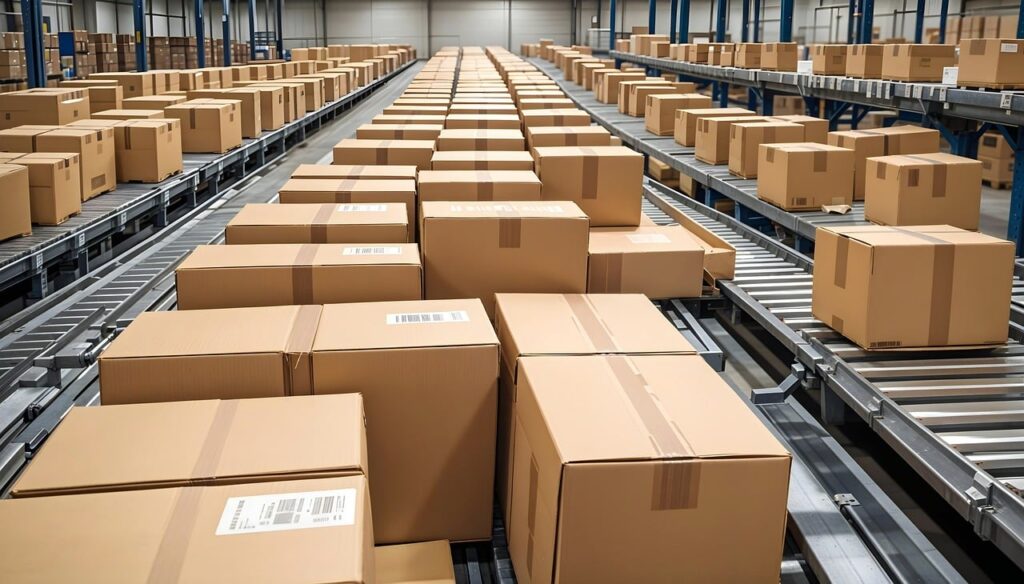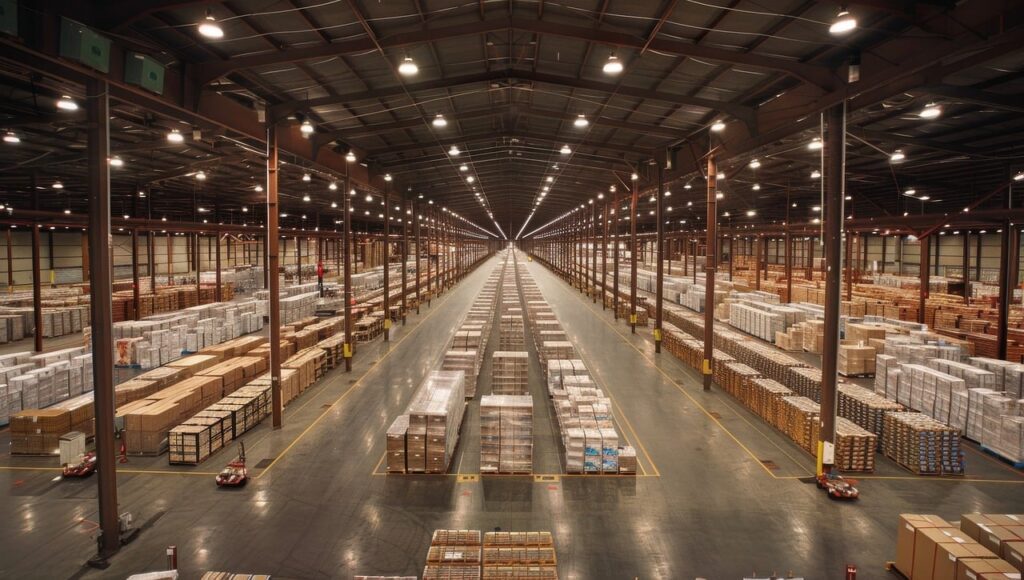In a logistics company, stressful moments, constant rush, and repeated errors had become part of everyday life. Each day started with discussions about new orders, but the focus wasn’t just on what needed to be shipped—it was mostly about how to package it.
Problems with shipping orders
Every order was different. One client required delicate products needing special packaging, while another wanted their order to fit on a single pallet. However, adding new products often exceeded the weight limits. Then came the calculations, which frequently turned out to be incorrect. This led to rushed repackaging, resulting in frustration. The warehouse team spent their days battling with boxes, pallets, tape, and labels. Stress mounted as everyone knew that every delay meant a disappointed customer.

While everything seemed under control on the surface, transport costs were skyrocketing. Too many poorly chosen packages for the size of orders were being shipped, with packaging often being too large or too small. Space was wasted, and the company was losing money on shipping. The costs of pallets, boxes, and fillers kept piling up, and red numbers began appearing more frequently in the reports.
On top of that, the endless paperwork made matters worse. After packing the goods, employees had to manually input data into courier systems, which took hours. The team not only had to measure and weigh the packages but also generate labels. Documents were often lost, and courier systems didn’t always match the data entered by employees. As deadlines loomed, most orders were still unready for shipping. Customers called to ask about the status of their shipments, and messages about delays began to accumulate. Every delay led to dissatisfaction, and unhappy customers meant financial losses.

During one of the tense discussions, someone asked, "What if all of this could be simplified? What if the system could suggest packaging, and a transport order could be created in just a few minutes? What if we knew exactly which packaging was best for a specific order?" The team couldn’t find an answer but knew something had to change. Too many elements required manual oversight, and every mistake had consequences. Every non-optimal package and poorly chosen packaging solution led not only to additional costs but also to delays and negative customer feedback.
The answer came with a new system. All these problems—chaotic packaging, losses from unsuitable packaging, and delays in the transport process—disappeared. By configuring the appropriate rules in the system, it automatically calculated the number of packages, suggested the best solutions based on the quantity and weight of inventory, and allowed automatic addition of packaging costs to sales orders. Employees began using new features, making their work much easier. Every order was now packed according to optimal rules, ensuring 100% space utilization. Instead of wasting time on matching packages, the system provided recommendations, leaving employees to simply approve them.

Shipping became faster. Instead of spending hours manually entering data, the system automatically generated transport documents and placed orders with transport companies. Sales orders and transport orders were now integrated, meaning the entire procedure—from packing to shipping—was completed in just a few minutes. Customers received their packages on time, and the company began saving on transport and packaging costs.
What’s more, employees gained the ability to simulate packaging quantities when creating offers. This gave them greater confidence during client negotiations, allowing precise shipping cost estimates and eliminating the risk of unexpected expenses. As a result, the sales process became more professional and transparent. Day by day, the company not only became more efficient but also gained positive feedback. Customers who previously complained about delays were now praising the company for quick order fulfillment. The team felt relieved as processes became more predictable and errors less frequent. Finally, everyone could breathe a sigh of relief—the problem of packaging, transport errors, and rising costs had been resolved.
How does the Transport Management System solve these issues?
TMS not only automates packaging processes but also improves transport management by, for example, automatically adding transport costs to sales orders. With features like suggested packaging and related tools, all challenges become easier to handle.
Automated packaging selection
The system analyzes the quantity and weight of inventory in real time and selects optimal packaging based on predefined rules. For instance, if 110 units of a product fit on one pallet, TMS will suggest it. If there are 15 units, the system knows to pack them into two boxes.
Adding packaging as a sales line item
Every package has a cost—whether it’s a box or a pallet. The Transport Management System allows automatic addition of packaging costs to sales orders. This enables the company to recover the value of used materials, avoiding financial losses. The client sees exactly what they’re paying for, improving transparency in billing.
Preparing transport orders
When the order is ready, the system automatically assigns the packed products to a transport order. This makes generating shipping documents and courier labels lightning-fast. Integration with popular courier service providers enables orders to be sent with a single click, eliminating time-consuming manual data entry.
Consolidation of packages
TMS goes a step further by analyzing whether smaller packages can be consolidated into larger ones. Shipping one pallet is far more cost-effective than sending multiple individual packages. The system considers priorities set in packaging rules and suggests the best solution.
Transparency and personalization
Calculation results are displayed in the additional information section, allowing users to see a summary of the number, type, and costs of packages at a glance. TMS also allows field personalization to tailor the view to the company’s specific needs.
Special packaging instructions
If a product has specialized packaging instructions defined, these will be displayed in the system, minimizing the risk of incorrect packing and ensuring customers receive undamaged goods.
Faster, cheaper, easier
Imagine a new reality. An employee enters an order into the system, and TMS selects the right packaging within seconds, adds it to the order as a sales line item, and prepares the transport order. Courier labels are ready, and the shipment is optimized for cost and time. No stress, no errors, full control over the process.
Implementing TMS – a step toward optimization
If your company struggles with chaos in packaging and shipping processes, the solution is TMS for Dynamics 365 Business Central. By automating suggested packaging, precisely managing costs, and speeding up the preparation of transport orders, you can save time, money, and resources. Want to learn more? Contact us and discover how TMS can transform logistics in your company!